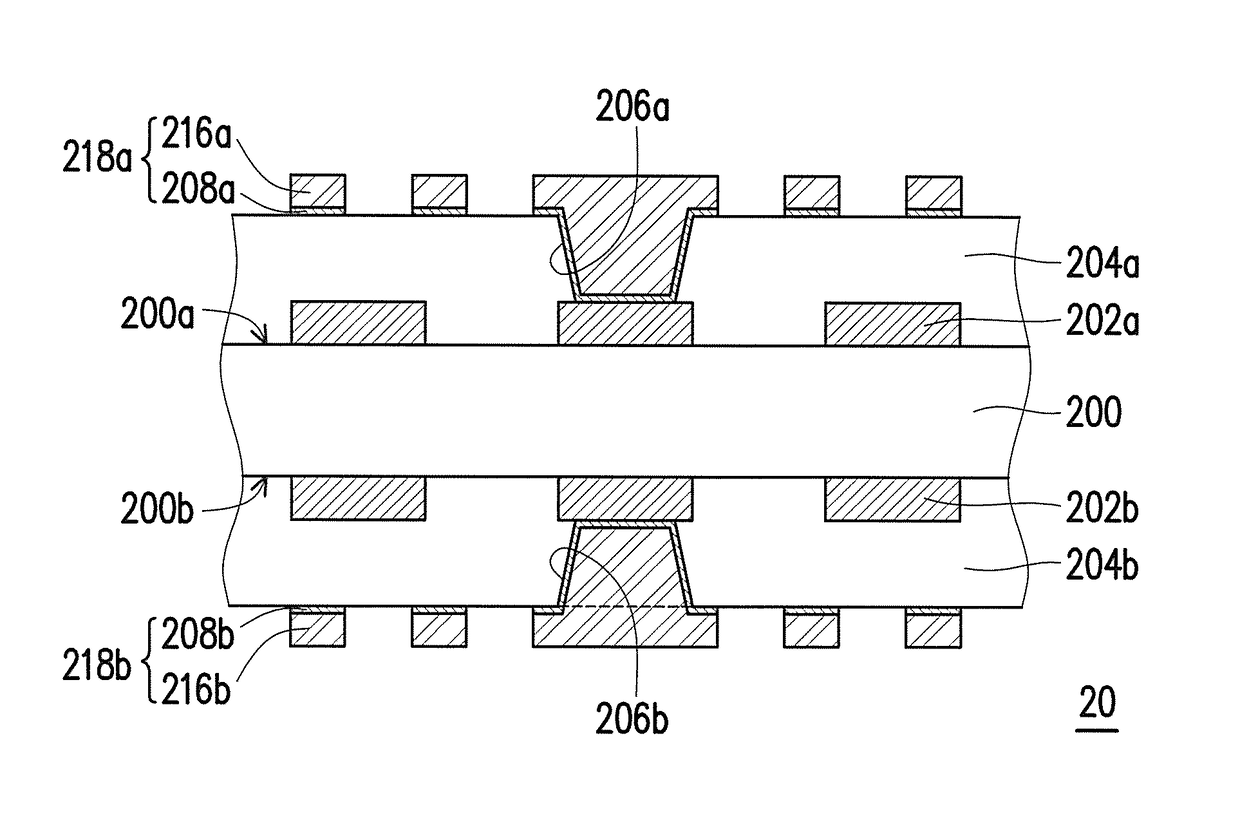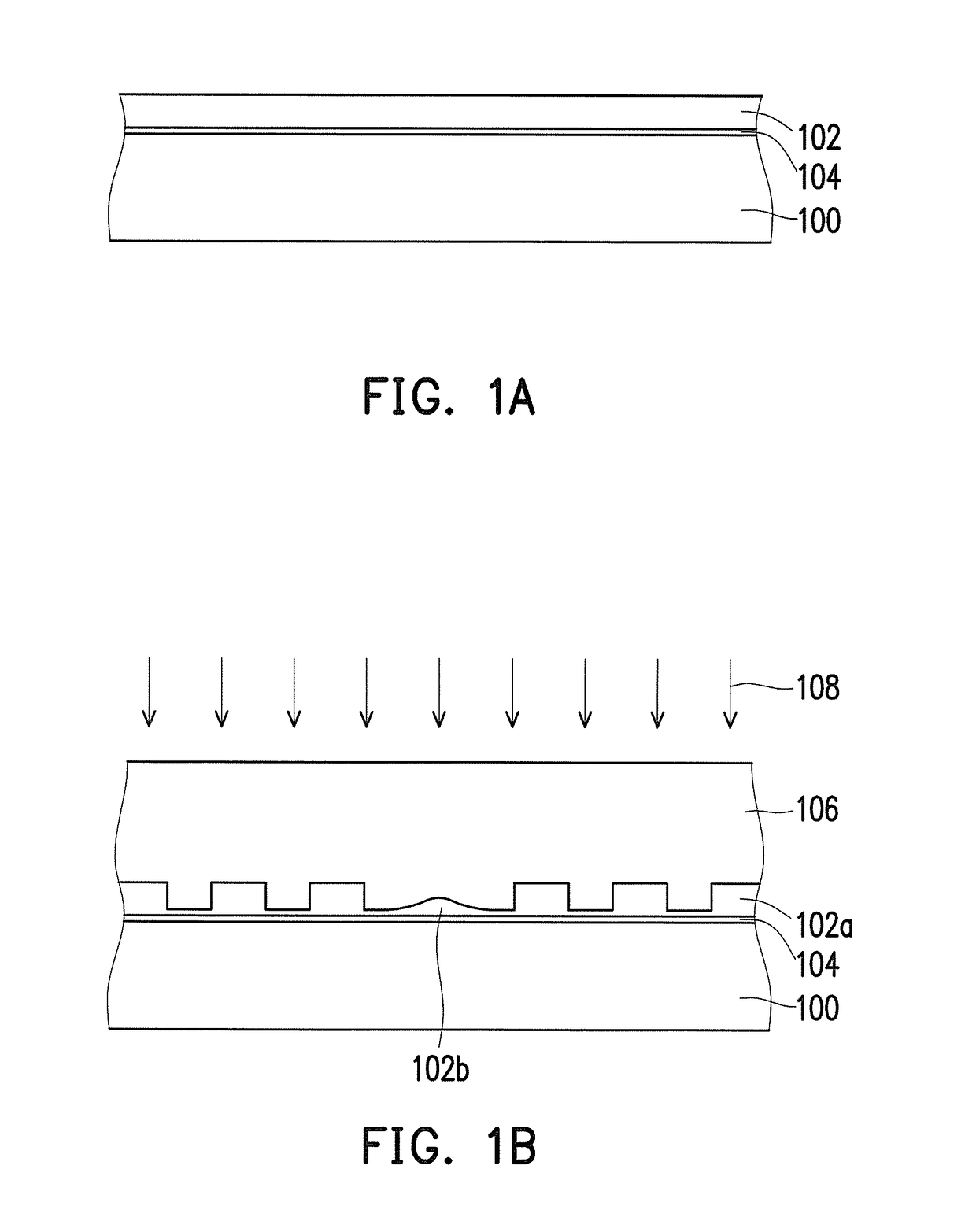Manufacturing method of circuit board
- Summary
- Abstract
- Description
- Claims
- Application Information
AI Technical Summary
Benefits of technology
Problems solved by technology
Method used
Image
Examples
first embodiment
[0024]FIG. 1A to FIG. 1G are cross-sectional schematics of the manufacturing process of a circuit board shown according to the first embodiment of the invention. First, referring to FIG. 1A, a photoresist material layer 102 is formed on a carrier substrate 100. The carrier substrate 100 is, for instance, a glass substrate, a copper clad laminate, a Si laminate, or a ceramic laminate. In the present embodiment, the photoresist material layer 102 is a photoresist material layer curied after UV irradiation, but the invention is not limited thereto. Moreover, in the present embodiment, a release layer 104 can further be formed between the carrier substrate 100 and the photoresist material layer 102. The release layer 104 can facilitate the separation of a patterned photoresist layer formed by the photoresist material layer 102 and the carrier substrate 100 in a subsequent process.
[0025]Next, referring to FIG. 1B, an imprinting process is performed on the photoresist material layer 102 v...
second embodiment
[0032]FIG. 2A to FIG. 2E are cross-sectional schematics of the manufacturing process of a circuit board shown according to the second embodiment of the invention. First, referring to FIG. 2A, a circuit pattern 202a is formed on a first surface 200a of a dielectric substrate 200, and a circuit pattern 202b is formed on a second surface 200b of the dielectric substrate 200. The material of the dielectric substrate 200 is, for instance, epoxy resin, glass fiber cloth, or ceramic. The material of the circuit patterns 202a and 202b is, for instance, copper. Then, a dielectric layer 204a is formed on the first surface 200a and a dielectric layer 204b is Ruined on the second surface 200b. The dielectric layer 204a covers the circuit pattern 202a on the first surface 200a and the dielectric layer 204b covers the circuit pattern 202b on the second surface 200b. The material of the dielectric layers 204a and 204b is, for instance, epoxy resin. The dielectric layers 204a and 204b are, for inst...
PUM
| Property | Measurement | Unit |
|---|---|---|
| Electrical conductor | aaaaa | aaaaa |
| Sensitivity | aaaaa | aaaaa |
| Mechanical force | aaaaa | aaaaa |
Abstract
Description
Claims
Application Information
 Login to View More
Login to View More - R&D
- Intellectual Property
- Life Sciences
- Materials
- Tech Scout
- Unparalleled Data Quality
- Higher Quality Content
- 60% Fewer Hallucinations
Browse by: Latest US Patents, China's latest patents, Technical Efficacy Thesaurus, Application Domain, Technology Topic, Popular Technical Reports.
© 2025 PatSnap. All rights reserved.Legal|Privacy policy|Modern Slavery Act Transparency Statement|Sitemap|About US| Contact US: help@patsnap.com



